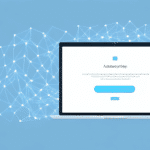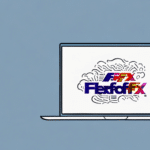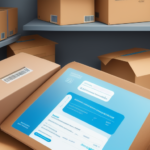Integrate UPS with Wave Accounting for Enhanced Small Business Operations
Managing finances effectively is crucial for small business owners. Wave Accounting offers an intuitive, cloud-based solution to streamline your financial processes. By integrating UPS with Wave Accounting, you can further enhance your business operations, making financial management and shipping processes seamless and efficient.
Why Integrate UPS with Wave Accounting?
Streamlining Shipping and Financial Management
Integrating UPS with Wave Accounting allows you to synchronize your shipping and financial data. This integration eliminates the need for manual data entry, reducing errors and saving valuable time. According to a Statista report, businesses that automate their shipping processes can save up to 20% in operational costs.
Real-Time Expense and Revenue Tracking
With UPS integration, you can track your shipping expenses and revenue in real-time. This visibility helps in making informed decisions regarding your shipping strategies and pricing models. According to a study by Harvard Business Review, real-time financial tracking can improve decision-making speed by 30%.
Enhancing Customer Service
Integrating UPS with Wave Accounting enables accurate tracking of shipments and provides reliable delivery estimates. This transparency enhances customer satisfaction and loyalty. A report from Forbes highlights that improved customer service can lead to a 15% increase in repeat business.
Benefits of UPS Integration with Wave Accounting
Comprehensive Financial Overview
By consolidating shipping and financial data, you gain a comprehensive overview of your business’s financial health. This integration allows you to monitor shipping costs alongside your revenue streams, providing a clearer picture of profitability.
Automated Shipping Calculations
Set up automated shipping rules in Wave Accounting to calculate shipping costs based on weight, destination, and other parameters. This automation not only saves time but also ensures accuracy in shipping charges during the checkout process.
Efficient Shipping Label Generation and Package Tracking
Generate shipping labels and track packages directly from Wave Accounting. This streamlined process reduces administrative tasks and ensures that your packages are accurately tracked from dispatch to delivery.
Step-by-Step Guide to Connecting UPS with Wave Accounting
- Log in to your Wave Accounting account and navigate to the Sales tab.
- Select the Shipping option and choose UPS from the list of carriers.
- Enter your UPS account details, including your account number and access key.
- Configure your default shipping options and set up any necessary shipping rules.
- Save your settings to complete the integration and begin managing your shipments through Wave Accounting.
If you encounter any issues during the setup, refer to the UPS Support Center for assistance.
Optimizing UPS for Seamless Integration
- Ensure your UPS account information is current and accurate.
- Configure shipping rules in Wave Accounting to automate shipping cost calculations.
- For international shipments, input all necessary customs information in your UPS account.
- Regularly review and adjust shipping expenses and pricing strategies based on your data insights.
Accurate package dimensions and weights are essential for precise shipping cost calculations. Additionally, leveraging UPS’s tracking and notification features can keep your customers informed, enhancing their experience and trust in your business.
Troubleshooting Common Integration Issues
- Incorrect UPS Account Information: Verify that all UPS account details entered into Wave Accounting are correct.
- Shipping Rules Misconfiguration: Ensure that shipping rules are properly set up and applied to each order.
- Incomplete Customs Information: For international shipments, double-check that all required customs data is accurately entered.
Other potential issues include synchronization failures between UPS and Wave Accounting due to incorrect API settings or outdated software versions. Always ensure that both platforms are updated to their latest versions and that your API settings are correctly configured.
Best Practices for Managing UPS and Wave Accounting Integration
- Regularly monitor and update your UPS account information.
- Automate shipping rules to reduce manual data entry and increase accuracy.
- Utilize Wave Accounting’s reporting tools to analyze shipping expenses, revenue, and profitability.
- Stay proactive in reviewing sales data to identify trends and adjust your shipping strategies accordingly.
- Maintain a backup plan for potential technical issues, such as alternative shipping options or backup accounting systems.
Communicate any changes in shipping options or pricing clearly to your customers to maintain transparency and trust.
Cost Implications of Integrating UPS with Wave Accounting
The costs associated with integrating UPS and Wave Accounting can vary based on your business size and specific requirements. While there may be initial setup costs and ongoing fees, the efficiency gains and cost savings from reduced manual processes often outweigh these expenses. According to Business Insider, businesses can save up to 30% in operational costs through effective automation and integration.
The Future of Small Business Accounting: Embracing Integration
The trend towards integrating logistics services like UPS with accounting software is set to grow. As businesses strive for greater efficiency and data accuracy, such integrations become essential. Embracing these technological advancements ensures that small businesses remain competitive and can scale effectively.
Conclusion: Streamline Your Operations with UPS and Wave Accounting
Integrating UPS with Wave Accounting offers significant benefits for small businesses, including streamlined operations, reduced errors, and enhanced financial oversight. By following best practices and optimizing your integration setup, you can save time and money while providing excellent customer service. Embrace this integration to drive your business towards greater efficiency and success.




















